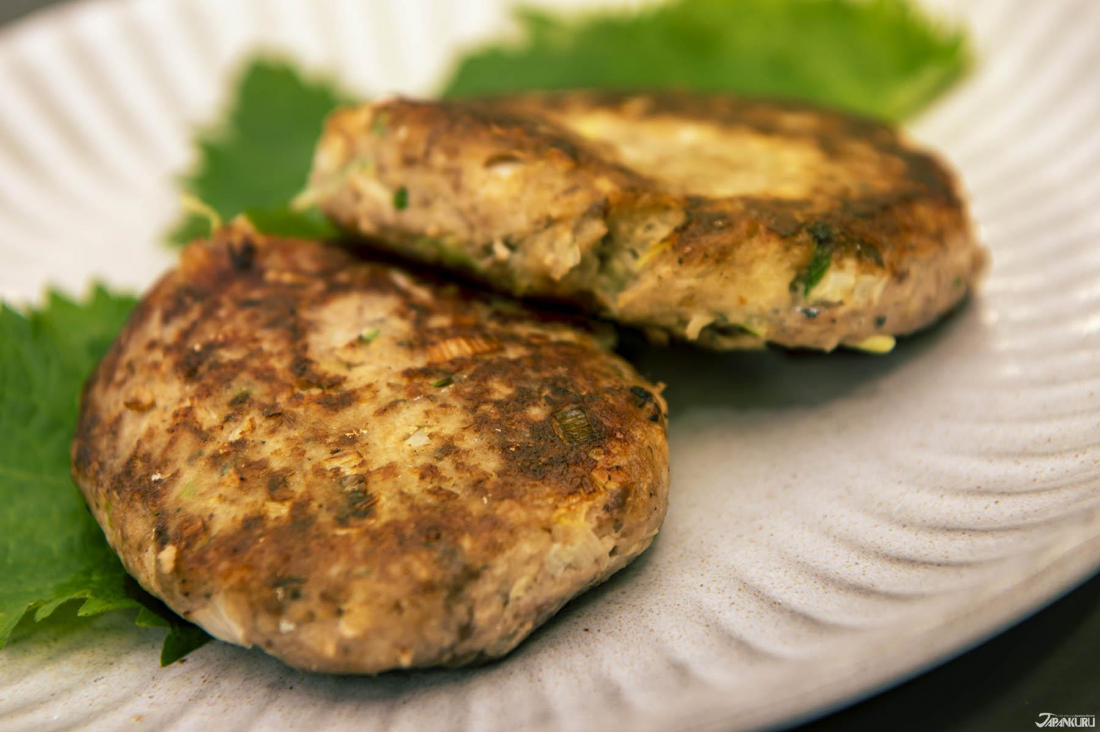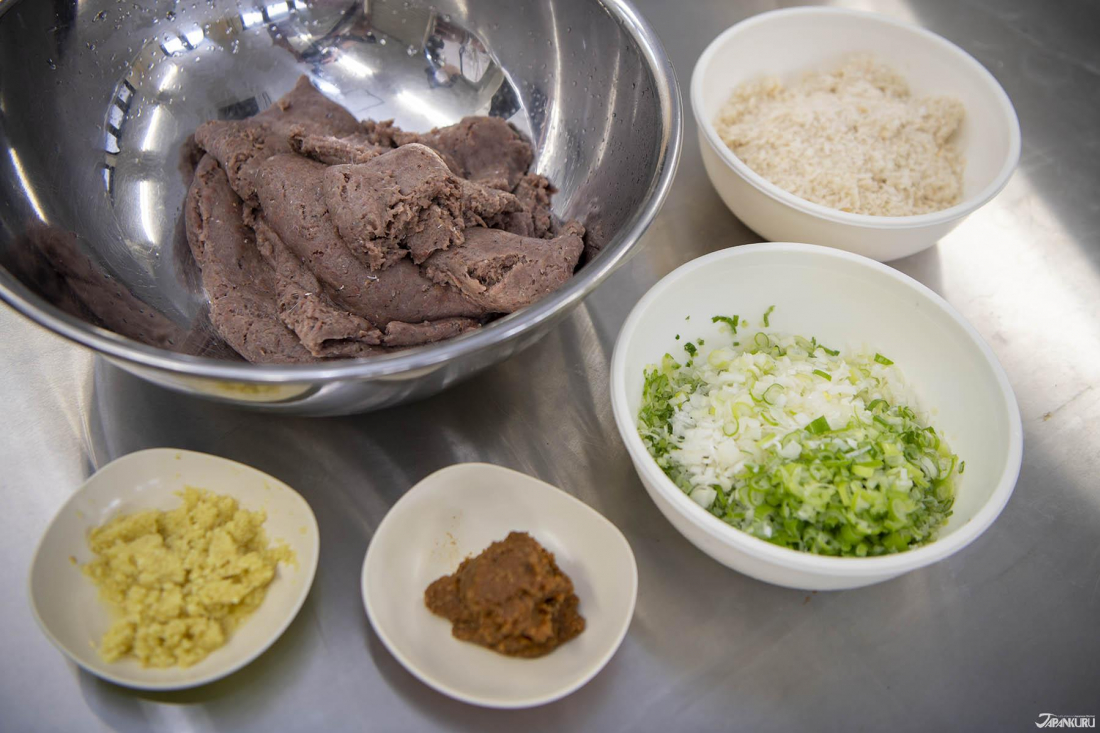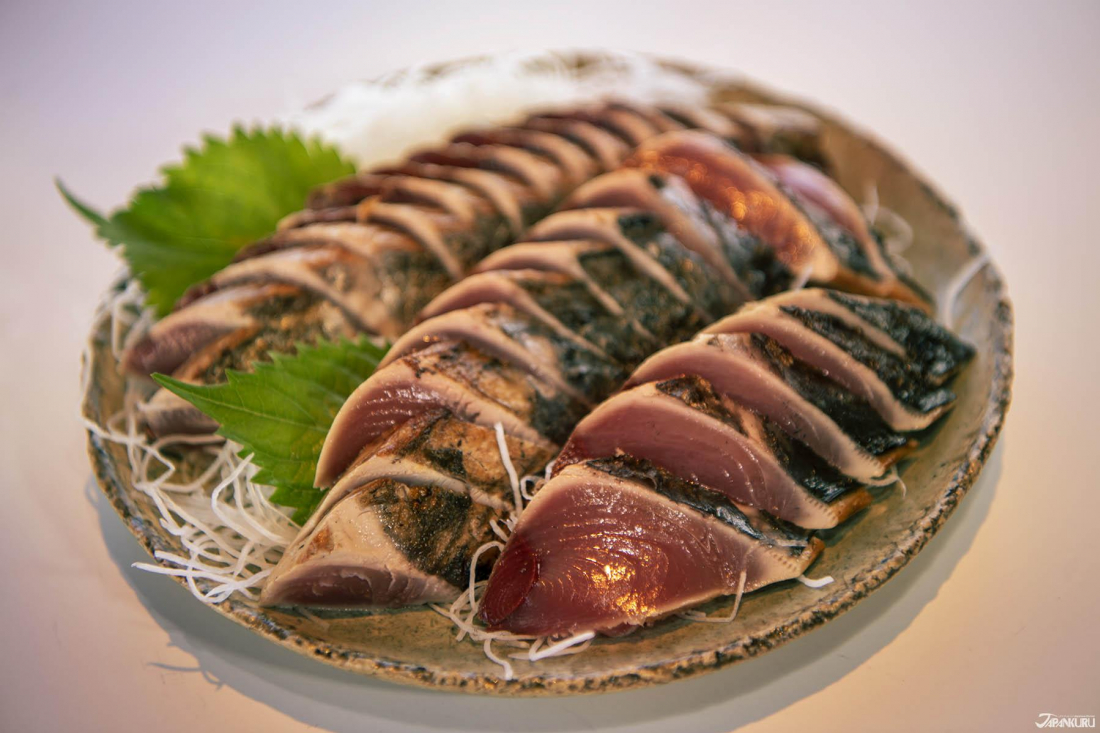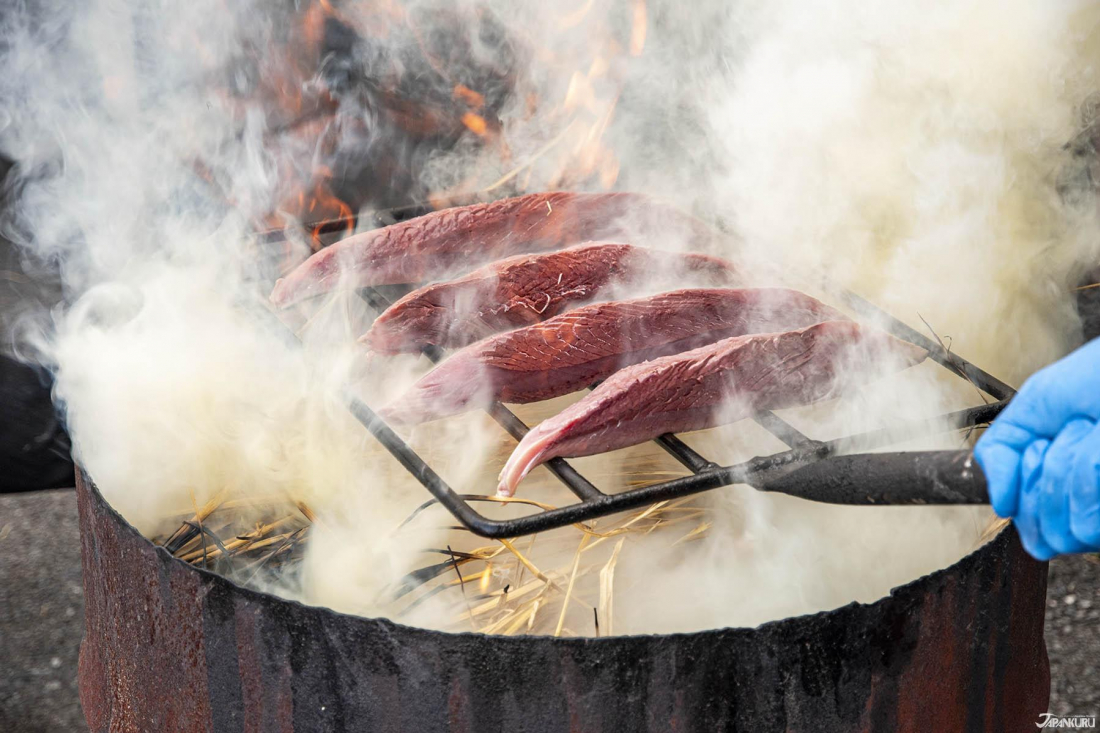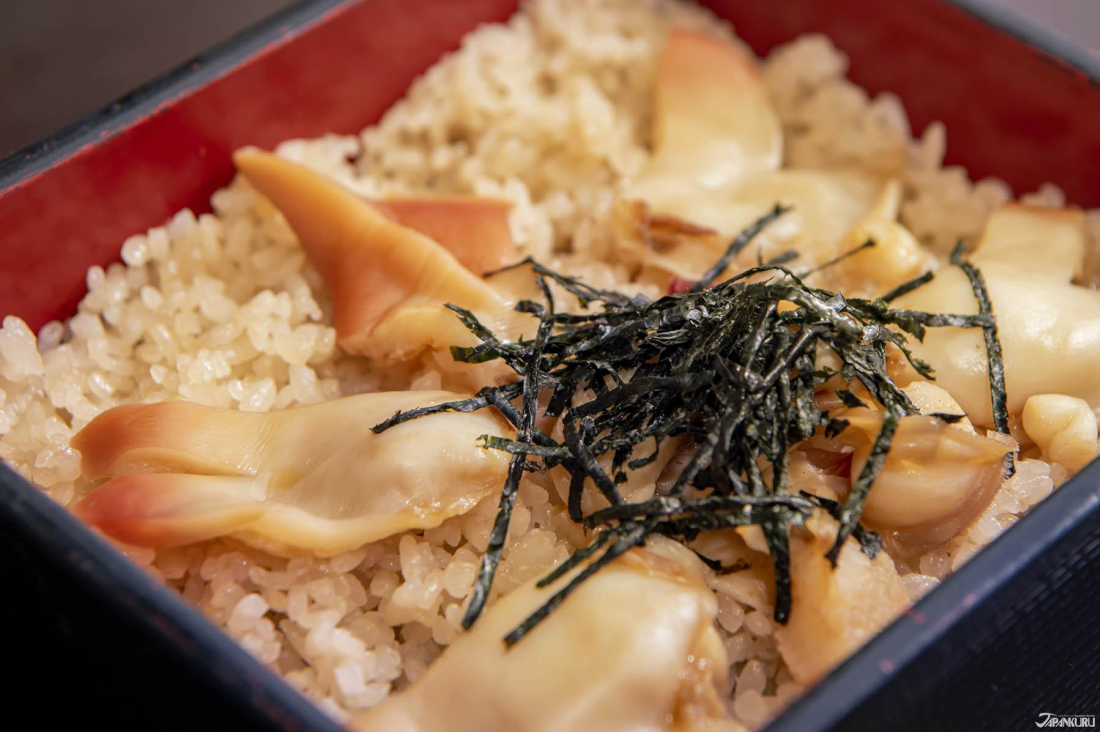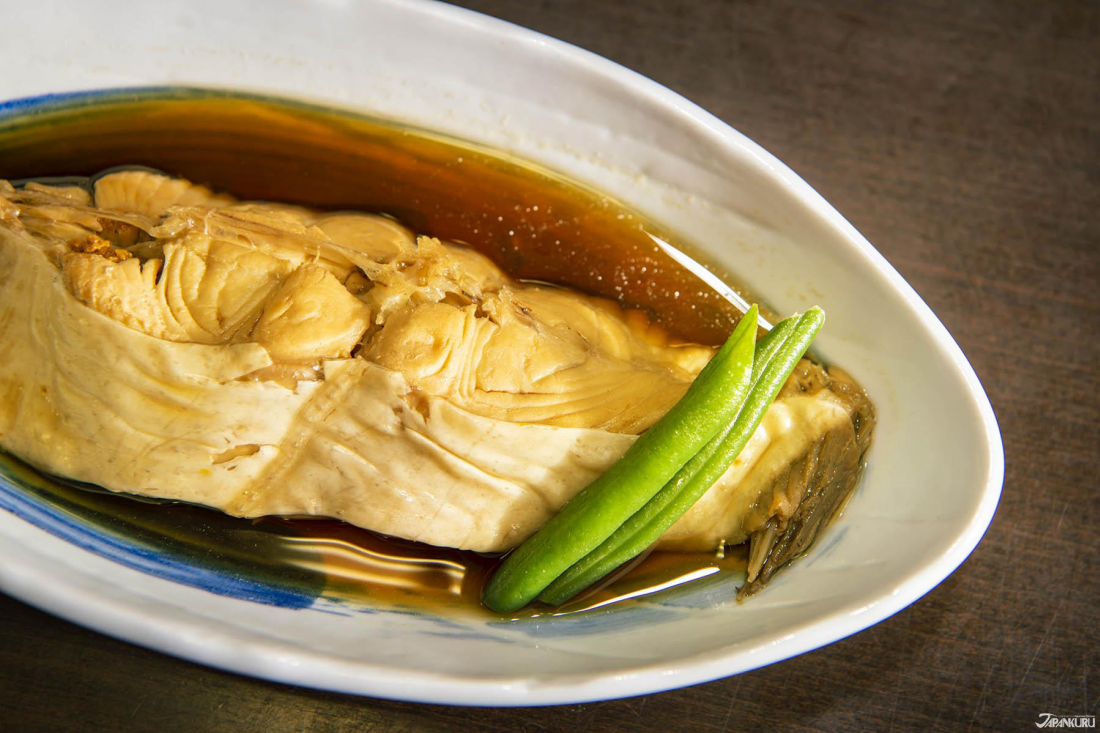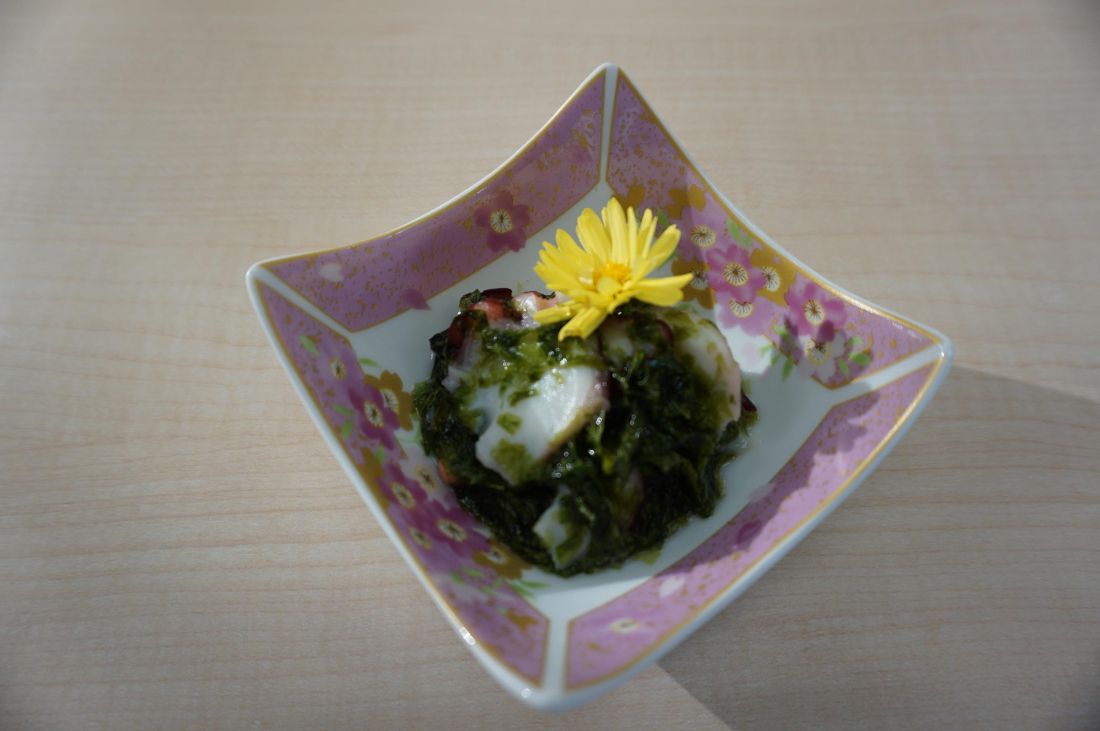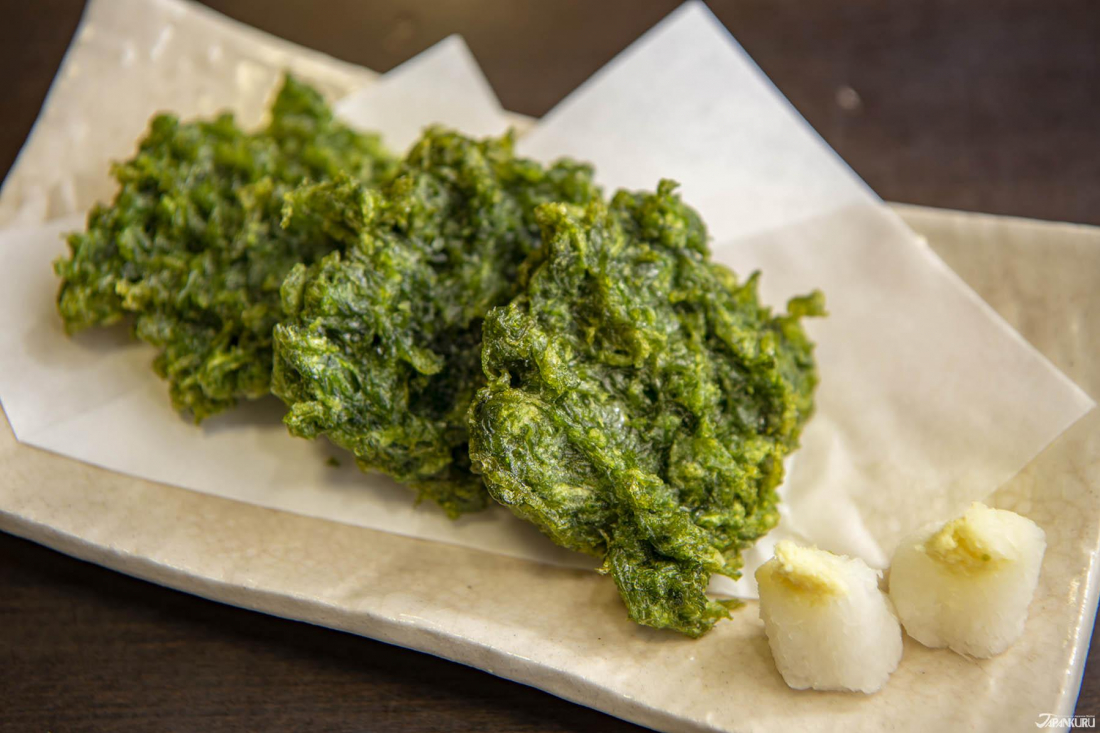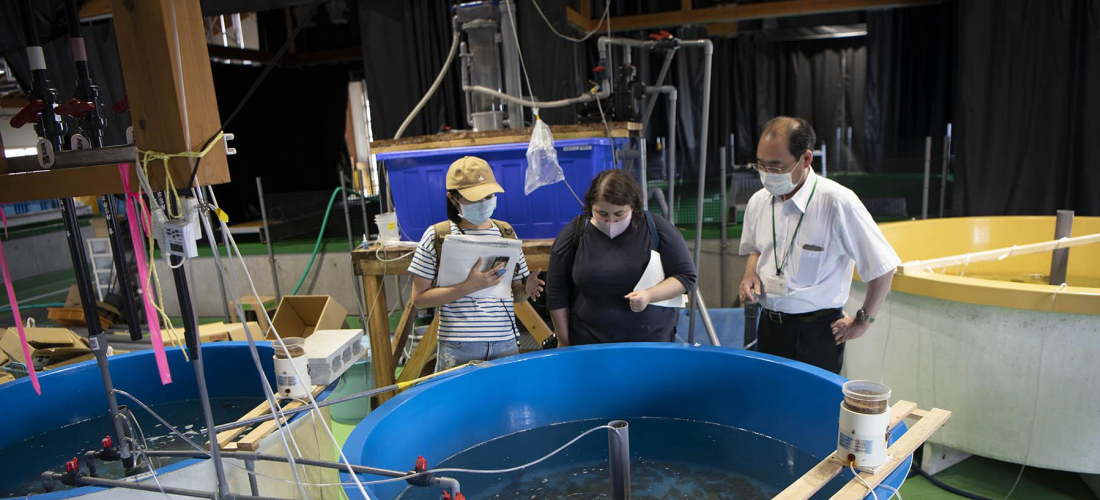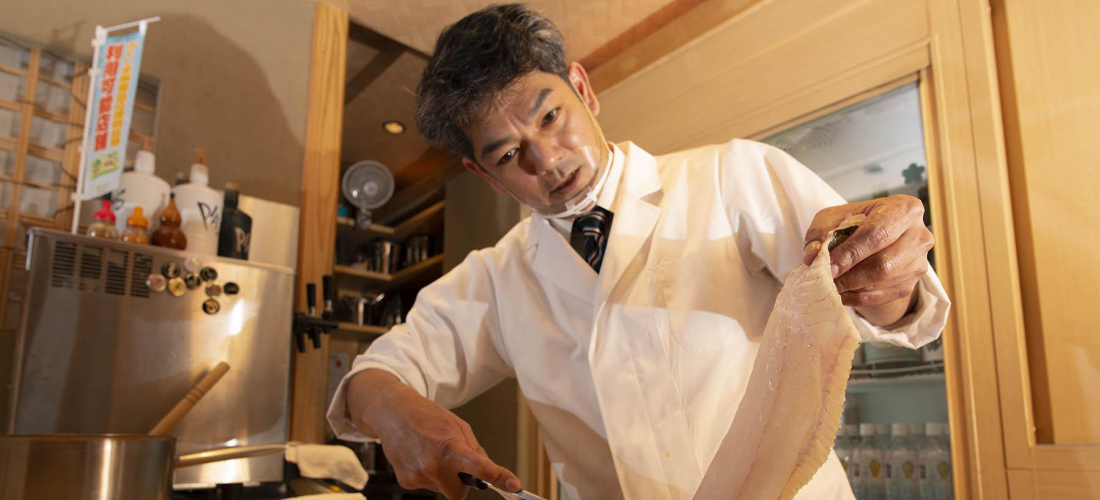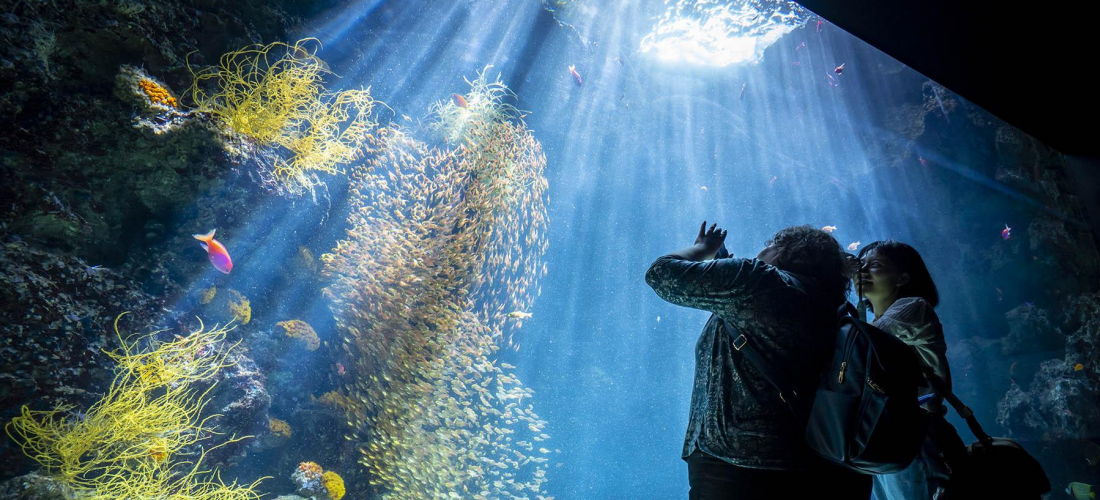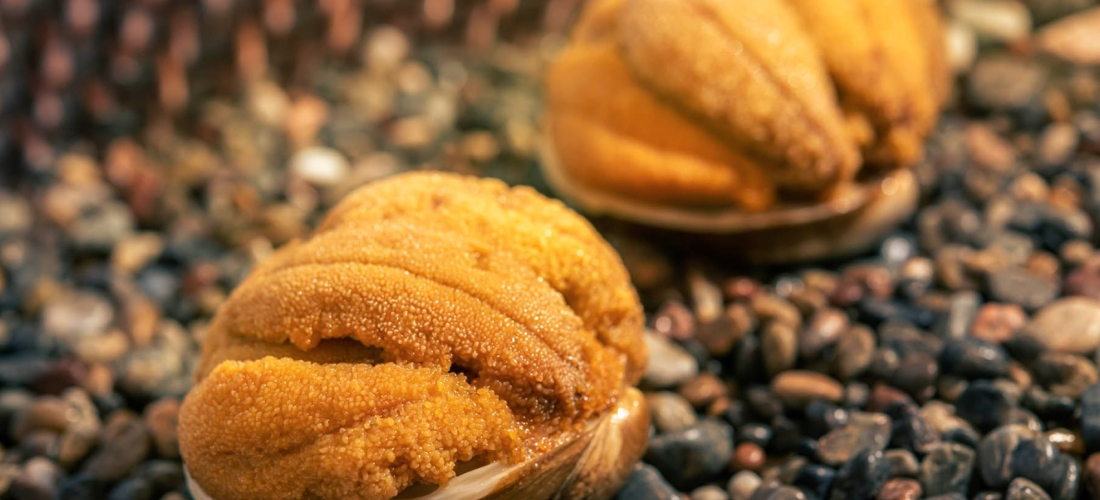
CONTENTS
Flatfish of all kinds, skipjack tuna, surf clams, Pacific saury, aonori seaweed and moreーJoban-mono comes from the “Shiome Sea”, where the Oyashio and Kuroshio ocean currents mix, producing seafood that has long been popular in Tokyo’s Tsukiji and Toyosu fish markets. But what dishes do locals cook up in the coastal Fukushima cities of Iwaki and Soma, to make the most of these fresh ingredients?
Joban-mono and Regional Cooking in Hama-dori
If you've been following the Joban-mono series here on Japankuru, you probably already know the story of this particular popular natural resource. With such plentiful praise heaped onto Joban-mono, it's no surprise if you're left wondering about the best way to eat it! So if you're heading to Fukushima's coastal Hama-dori region, be sure to look for a few of these popular dishes, all local Fukushima favorites.
3 Local Specialties from Iwaki
① Uni no Kaiyaki (Clamshell-Baked Sea Urchin)
If you love the rich flavor and light sweetness of uni (sea urchin), this luxurious little uni no kaiyaki probably has your mouth watering already. The mountain of golden sea urchin bulging out of a surf clam shell is an iconic seafood dish hailing from the city of Iwaki.
This dish is a regional specialty from the Meiji era (1868 – 1912), before the time of refrigerators, when they would steam-bake the fresh uni on surf clam shells as a way to extend its shelf life. This dish is the ultimate treat for dedicated seafood lovers, and one bite of this uni caught in the Shiome Sea will fill the mouth with a sweet aroma and the taste of the ocean.
② Sanma Popo-yaki (Pacific Saury Burgers)
When cooking Pacific saury, most Japanese chefs will think of Japan's classic grilled fish. But this fish has been more than ubiquitous in Iwaki for a long time, and with so much of Pacific saury in the hands of local home cooks, some of them clearly got a little creative somewhere along the wayーespecially when cooking for picky children who might not like the strong flavor of this oily fish. The recipe for popo-yaki is simple: skin, debone, and remove the innards of the fish, before finely mincing it, and mixing it with chopped onion, ginger, miso, and perhaps a secret ingredient or two to jazz things up. With these strongly-flavored ingredients, the end result is a balance that makes it easy for anyone to enjoy the flavor of Pacific saury. Popo-yaki is cooked just like you might cook a hamburger or a crab cake (another similar recipe), with a little oil in a frying pan.
"Yaki" means fried in Japanese, but the "popo" part of the dish's name has a few possible origins. Japan is known for its common use of onomatopoeias, and some say that the noise of these patties frying sounds a little like "po po." For a long time, the recipe was common with fishermen who would grill the fish patties while out at sea, and the sound of oil dripping off the fish and onto the fire might have sounded a bit like "po po," too. Others theorize that the "po po" is actually replicating the sound you make when you breathe out around a bite of popo-yaki fresh from the pan, as you try to cool the too-hot food in your mouth.
Like most home cooking, popo-yaki preferences vary from household to household, resulting in different recipes wherever you go. This time, the Japankuru team got to see popo-yaki made fresh by the chefs at Uenodai Yutaka, a shop that prepares and sells popo-yaki in the city of Iwaki. Shop owner Yutaka Uenodai (written a little differently from the shop name), added that "splashing on some soy sauce after frying the patties is pretty tasty, or even a little tomato ketchup. Ketchup is especially popular with kids. But popo-yaki is already seasoned with miso in the patty itself, so it's already delicious without any added condiments." Of course, Pacific saury is such a part of the daily catch in Iwaki, popo-yaki isn't the only unique local recipe. Many cooks also dry the fish, traditionally, adding extra flavor with mirin rice wine and other condiments!
③ Katsuo no Warayaki (Straw-Grilled Skipjack Tuna)
Skipjack tuna (or bonito) grilled over a straw fire was originally a local specialty in the part of Kochi Prefecture that was once Tosa Provinceーnot at all close to Fukushima. But with such high-quality skipjack tuna being caught off the coast of Iwaki, these days it feels like Fukushima cuisine. From early summer to autumn, when the quality of Joban-mono skipjack tuna just can't be beat, cuts of the fish are grilled over the intense flames of local Fukushima straw. They say that searing the outside burns away any lingering fishiness, giving you a chance to savor the true flavor of skipjack tuna.
After the fish is grilled, it's quickly tossed into cold water to stop the cooking, before being cut into thick slices and served with ginger and soy sauce. This particular grilling method allows the outer-most layer of the fish to cook, but leaves the inner parts fresh and uncooked, like sashimi. The straw also imparts a unique smoky aroma, intensifying the aromatic skipjack tuna. It's not hard to see why they might want to claim this particular recipe as their own, in Iwaki.
3 Local Specialties from Soma
① Hokki-meshi (Rice with Surf Clams)
In Iwaki, popo-yaki is classic home cooking found on dinner tables around the city, but what about in Soma? The answer might just be hokki-meshi: rice cooked with Sakhalin surf clams (called hokki-gai, ホッキ貝, in Japanese). The surf clams in Soma are especially famous, and this simple dish shows off their fresh flavor, prepared with just a little soy sauce and cooking sake to add depth to the rice and clams. The homey recipe's simplicity makes it popular with everyone in the family, young and old. And of course, it's available at restaurants as well, like Takohachi, a restaurant we mentioned back in part 5 of this series.
② Karei no Nitsuke (Stewed Righteye Flounder)
When we last heard from Kanji Tachiya, president of the Soma Futaba Fisheries Cooperative Association, he was telling us that "the flatfish from the Soma is praised as being some of the best in Japan." And that particularly delicious flatfish is an everyday ingredient in Soma, especially when it's stewed in a sweet broth, a preparation called "nitsuke" (煮付け). During the Japankuru team's visit to Soma, we got to try some stewed righteye flounder (called karei, カレイ) in a local restaurant, but we later had the privilege of seeing a homemade version prepared for us during an online interview with the Soma Futaba Fisheries Cooperative Association Women's Club.
The people living in the Hama-dori region are said to have a taste for strong flavors, and even in this simple dish, they tend to use particularly bold varieties of soy sauce. Just from the deep color of the broth and the enticing aroma, it's clear you won't be satisfied with just one bite of this tender fish.
③ Tako to Aonori no Sumono (Octopus and Seaweed with Vinegar) / Aonori Tempura
Matsukawaura Lagoon is an iconic landmark in Soma, and the aonori seaweed grown in the lagoon's waters is a famous local product. Not only do locals snack on the seaweed and add it to miso soup, they've also come up with a number of recipes to make the most of the ingredient. During our online chat with the Soma Futaba Fisheries Cooperative Association Women's Club, for example, they whipped up a unique little dish with octopus, aonori seaweed, and vinegar. The combination of octopus, fresh seaweed, and a burst of sour vinegar looked like a perfect summer side.
Perhaps the most surprising aonori seaweed recipe we laid eyes on, however, was this tempura! Nobody on the Japankuru team was expecting to find a seaweed dish like this. The grated daikon radish and ginger served on the side helped to cut down on any excess oiliness, leaving the lightly-battered disks of aonori seaweed with a delicious crunch, and unique flavor.
Delicious Joban-mono & Hama-dori Cooking
The six local specialties above are just a handful of the many Joban-mono dishes found around Fukushima's coastal region, cooked and eaten every day by Hama-dori locals. If any of them have caught your eye, we highly recommend you visit Iwaki and Soma whenever you have a chance, to try some of the food for yourself!
If that sounds difficult, however, there's always Tokyo! In the next article, the very last part of our Joban-mono series, we'll be looking at restaurants where diners can enjoy the fresh flavors of Joban-mono, within Japan's capital city. If you're a bit of a foodie or you just love to eat, look out for part 10.
Details
NAME:Fukushima Dining
COMMENT
FEATURED MEDIA
VIEW MORE 
A New Tokyo Animal Destination: Relax & Learn About the World’s Animals in Japan
#pr #japankuru #anitouch #anitouchtokyodome #capybara #capybaracafe #animalcafe #tokyotrip #japantrip #카피바라 #애니터치 #아이와가볼만한곳 #도쿄여행 #가족여행 #東京旅遊 #東京親子景點 #日本動物互動體驗 #水豚泡澡 #東京巨蛋城 #เที่ยวญี่ปุ่น2025 #ที่เที่ยวครอบครัว #สวนสัตว์ในร่ม #TokyoDomeCity #anitouchtokyodome

Shohei Ohtani Collab Developed Products & Other Japanese Drugstore Recommendations From Kowa
#pr #japankuru
#kowa #syncronkowa #japanshopping #preworkout #postworkout #tokyoshopping #japantrip #일본쇼핑 #일본이온음료 #오타니 #오타니쇼헤이 #코와 #興和 #日本必買 #日本旅遊 #運動補充能量 #運動飲品 #ช้อปปิ้งญี่ปุ่น #เครื่องดื่มออกกำลังกาย #นักกีฬา #ผลิตภัณฑ์ญี่ปุ่น #อาหารเสริมญี่ปุ่น

도쿄 근교 당일치기 여행 추천! 작은 에도라 불리는 ‘가와고에’
세이부 ‘가와고에 패스(디지털)’ 하나면 편리하게 이동 + 가성비까지 완벽하게! 필름카메라 감성 가득한 레트로 거리 길거리 먹방부터 귀여움 끝판왕 핫플&포토 스폿까지 총집합!
Looking for day trips from Tokyo? Try Kawagoe, AKA Little Edo!
Use the SEIBU KAWAGOE PASS (Digital) for easy, affordable transportation!
Check out the historic streets of Kawagoe for some great street food and plenty of picturesque retro photo ops.
#pr #japankuru #도쿄근교여행 #가와고에 #가와고에패스 #세이부패스 #기모노체험 #가와고에여행 #도쿄여행코스 #도쿄근교당일치기 #세이부가와고에패스
#tokyotrip #kawagoe #tokyodaytrip #seibukawagoepass #kimono #japantrip

Hirakata Park, Osaka: Enjoy the Classic Japanese Theme Park Experience!
#pr #japankuru #hirakatapark #amusementpark #japantrip #osakatrip #familytrip #rollercoaster #retrôvibes #枚方公園 #大阪旅遊 #關西私房景點 #日本親子旅行 #日本遊樂園 #木造雲霄飛車 #히라카타파크 #สวนสนุกฮิราคาตะพาร์ค

🍵Love Matcha? Upgrade Your Matcha Experience With Tsujiri!
・160년 전통 일본 말차 브랜드 츠지리에서 말차 덕후들이 픽한 인기템만 골라봤어요
・抹茶控的天堂!甜點、餅乾、飲品一次滿足,連伴手禮都幫你列好清單了
・ส่องมัทฉะสุดฮิต พร้อมพาเที่ยวร้านดังในอุจิ เกียวโต
#pr #japankuru #matcha #matchalover #uji #kyoto #japantrip #ujimatcha #matchalatte #matchasweets #tsujiri #말차 #말차덕후 #츠지리 #교토여행 #말차라떼 #辻利抹茶 #抹茶控 #日本抹茶 #宇治 #宇治抹茶 #日本伴手禮 #抹茶拿鐵 #抹茶甜點 #มัทฉะ #ของฝากญี่ปุ่น #ชาเขียวญี่ปุ่น #ซึจิริ #เกียวโต

・What Is Nenaito? And How Does This Sleep Care Supplement Work?
・你的睡眠保健品——認識「睡眠茶氨酸錠」
・수면 케어 서플리먼트 ‘네나이토’란?
・ผลิตภัณฑ์เสริมอาหารดูแลการนอน “Nenaito(ネナイト)” คืออะไร?
#pr #japankuru #sleepcare #japanshopping #nenaito #sleepsupplement #asahi #睡眠茶氨酸錠 #睡眠保健 #朝日 #l茶胺酸 #日本藥妝 #日本必買 #일본쇼핑 #수면 #건강하자 #네나이토 #일본영양제 #อาหารเสริมญี่ปุ่น #ช้อปปิ้งญี่ปุ่น #ร้านขายยาญี่ปุ่น #ดูแลตัวเองก่อนนอน #อาซาฮิ

Japanese Drugstore Must-Buys! Essential Items from Hisamitsu® Pharmaceutical
#PR #japankuru #hisamitsu #salonpas #feitas #hisamitsupharmaceutical #japanshopping #tokyoshopping #traveltips #japanhaul #japantrip #japantravel

Whether you grew up with Dragon Ball or you just fell in love with Dragon Ball DAIMA, you'll like the newest JINS collab. Shop this limited-edition Dragon Ball accessory collection to find some of the best Dragon Ball merchandise in Japan!
>> Find out more at Japankuru.com! (link in bio)
#japankuru #dragonball #dragonballdaima #animecollab #japanshopping #jins #japaneseglasses #japantravel #animemerch #pr

This month, Japankuru teamed up with @official_korekoko to invite three influencers (originally from Thailand, China, and Taiwan) on a trip to Yokohama. Check out the article (in Chinese) on Japankuru.com for all of their travel tips and photography hints - and look forward to more cool collaborations coming soon!
【橫濱夜散策 x 教你怎麼拍出網美照 📸✨】
每次來日本玩,是不是都會先找旅日網紅的推薦清單?
這次,我們邀請擁有日本豐富旅遊經驗的🇹🇭泰國、🇨🇳中國、🇹🇼台灣網紅,帶你走進夜晚的橫濱!從玩樂路線到拍照技巧,教你怎麼拍出最美的夜景照。那些熟悉的景點,換個視角說不定會有新發現~快跟他們一起出發吧!
#japankuru #橫濱紅磚倉庫 #汽車道 #中華街 #yokohama #japankuru #橫濱紅磚倉庫 #汽車道 #中華街 #yokohama #yokohamaredbrickwarehouse #yokohamachinatown

If you’re a fan of Vivienne Westwood's Japanese designs, and you’re looking forward to shopping in Harajuku this summer, we’ve got important news for you. Vivienne Westwood RED LABEL Laforet Harajuku is now closed for renovations - but the grand reopening is scheduled for July!
>> Find out more at Japankuru.com! (link in bio)
#japankuru #viviennewestwood #harajuku #omotesando #viviennewestwoodredlabel #viviennewestwoodjapan #비비안웨스트우드 #오모테산도 #하라주쿠 #日本購物 #薇薇安魏斯伍德 #日本時尚 #原宿 #表參道 #japantrip #japanshopping #pr

Ready to see TeamLab in Kyoto!? At TeamLab Biovortex Kyoto, the collective is taking their acclaimed immersive art and bringing it to Japan's ancient capital. We can't wait to see it for ourselves this autumn!
>> Find out more at Japankuru.com! (link in bio)
#japankuru #teamlab #teamlabbiovortex #kyoto #kyototrip #japantravel #artnews
Photos courtesy of teamLab, Exhibition view of teamLab Biovortex Kyoto, 2025, Kyoto ® teamLab, courtesy Pace Gallery

Japanese Makeup Shopping • A Trip to Kamakura & Enoshima With Canmake’s Cool-Toned Summer Makeup
#pr #canmake #enoshima #enoden #에노시마 #캔메이크 #japanesemakeup #japanesecosmetics

⚔️The Robot Restaurant is gone, but the Samurai Restaurant is here to take its place. Check it out, and don't forget your coupon!
🍣신주쿠의 명소 로봇 레스토랑이 사무라이 레스토랑으로 부활! 절찬 쿠폰 발급중
💃18歲以上才能入場的歌舞秀,和你想的不一樣!拿好優惠券去看看~
#tokyo #shinjuku #samurairestaurant #robotrestaurant #tokyotrip #도쿄여행 #신주쿠 #사무라이레스토랑 #이색체험 #할인이벤트 #歌舞伎町 #東京景點 #武士餐廳 #日本表演 #日本文化體驗 #japankuru #japantrip #japantravel #japanlovers #japan_of_insta

Japanese appliance & electronics shopping with our KOJIMA x BicCamera coupon!
用JAPANKURU的KOJIMA x BicCamera優惠券買這些正好❤️
코지마 x 빅 카메라 쿠폰으로 일본 가전 제품 쇼핑하기
#pr #japankuru #japanshopping #kojima #biccamera #japaneseskincare #yaman #dji #osmopocket3 #skincaredevice #日本購物 #美容儀 #相機 #雅萌 #日本家電 #일본여행 #면세 #여행꿀팁 #일본쇼핑리스트 #쿠폰 #일본쇼핑 #일본브랜드 #할인 #코지마 #빅카메라 #japankurucoupon



